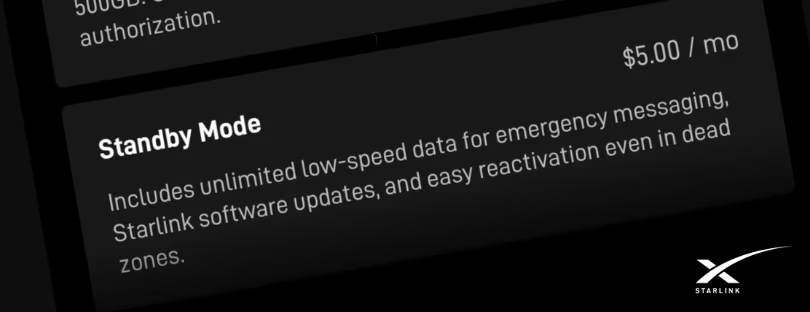Starlink Introduces Paid Standby Mode: What It Means for Subscribers

Understanding Starlink’s New Standby Mode
Starlink, the cutting-edge satellite internet service pioneered by SpaceX, recently brought a significant change to how customers manage their subscriptions during periods of inactivity. Previously, the convenience of pausing subscriptions for free was a key advantage for many users, particularly seasonal travelers, RV enthusiasts, or sailors who only needed service on a temporary basis. However, this flexibility has been replaced with a $5/€5 monthly charge under a new feature called Standby Mode. While Standby Mode ensures limited connectivity and smoother reactivation, the move has stirred mixed reactions among users. So, what are the implications of this new policy?
What Is Standby Mode?
Standby Mode is designed to keep your Starlink account active while offering low-speed internet, capped at approximately 500 kbps for downloading and uploading. This limited connectivity is sufficient for basic tasks like messaging, software updates, emergency communication, and light browsing. Subscribers can activate Standby Mode directly through their Starlink app or online account to temporarily downsize their plan. For $5 per month, the service aims to provide a fallback option for users who prefer basic connectivity rather than canceling their subscription entirely.
However, this new model ends the previously free option to pause service, creating a mandatory small fee for those who might only use Starlink occasionally. This affects users with Residential and Roam plans who previously enjoyed avoiding monthly charges during dormant periods. $5 per month might not seem significant at first glance, but it adds up to $60 annually, which could be a hefty extra cost for light or seasonal users.
User Reactions: A Mixed Bag
The introduction of Standby Mode has led to debates among Starlink’s expanding customer base. Some users appreciate the convenience of an always-on connection, even at low speeds, especially for situations where quick reactivation or emergency connectivity is needed. One frequent user expressed, “Voice and messaging capability is probably one of the biggest use cases… This actually sounds useful if you need to turn the service back on without other connectivity to get a 2FA code.”
Others, however, see it as an unwelcome expense for a service that was once free during downtime. One user commented, “It seems annoying… now they want money for something that is off and in storage more than half the year.” For many, the prospect of paying $5 per month for minimal connectivity is a step back from the more flexible solution they previously enjoyed.
Implications for Subscribers and Starlink
Starlink’s Standby Mode might be more than just a policy change—it could reflect broader shifts in how SpaceX manages its growing network capacity and revenue streams. The new model allows Starlink to keep inactive accounts on its radar, helping the company better allocate bandwidth to meet rising demand. However, this approach introduces a potential risk for those canceling their subscriptions instead of opting for Standby Mode. Reactivation in congested areas may be difficult as satellite capacity fills up, leaving former customers stranded without service when they need it most.
Ultimately, the introduction of Standby Mode highlights the challenges of balancing customer expectations with operational efficiency. For users who value low-cost flexibility, the policy feels like a downgrade. But for those who prioritize always-on connectivity—even at reduced speeds—it represents a useful safety net. Moving forward, customers will need to weigh the convenience of Standby Mode against its costs and their own usage needs.



